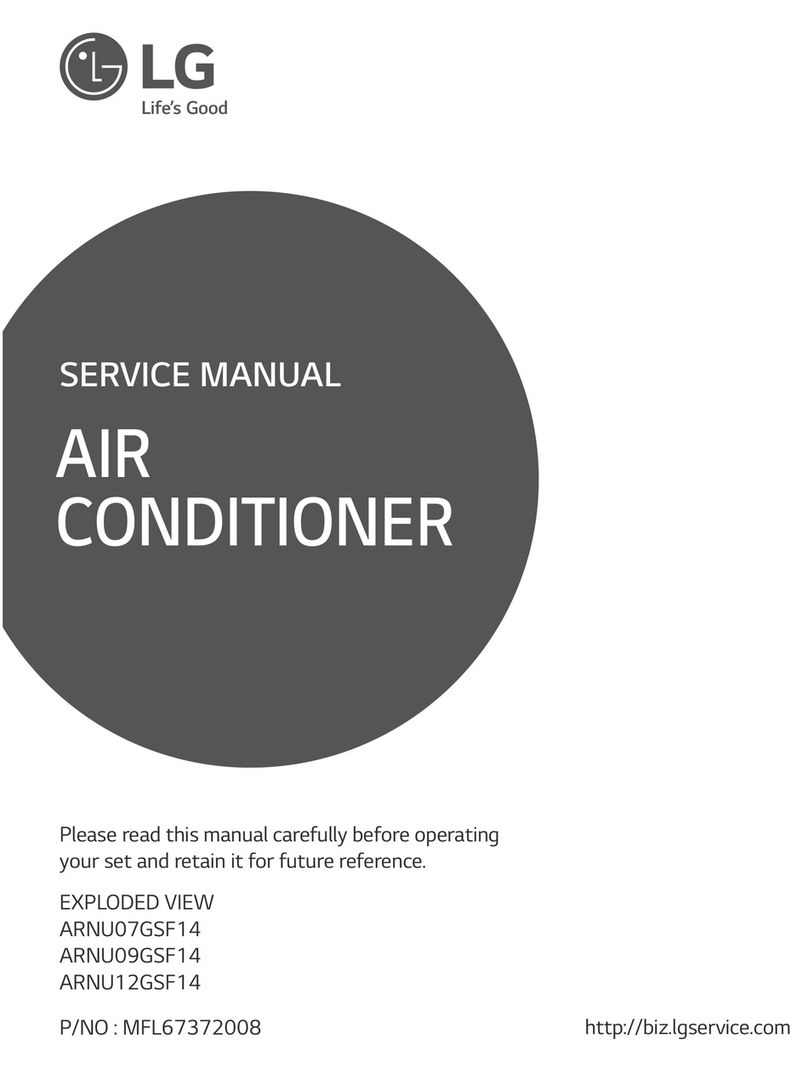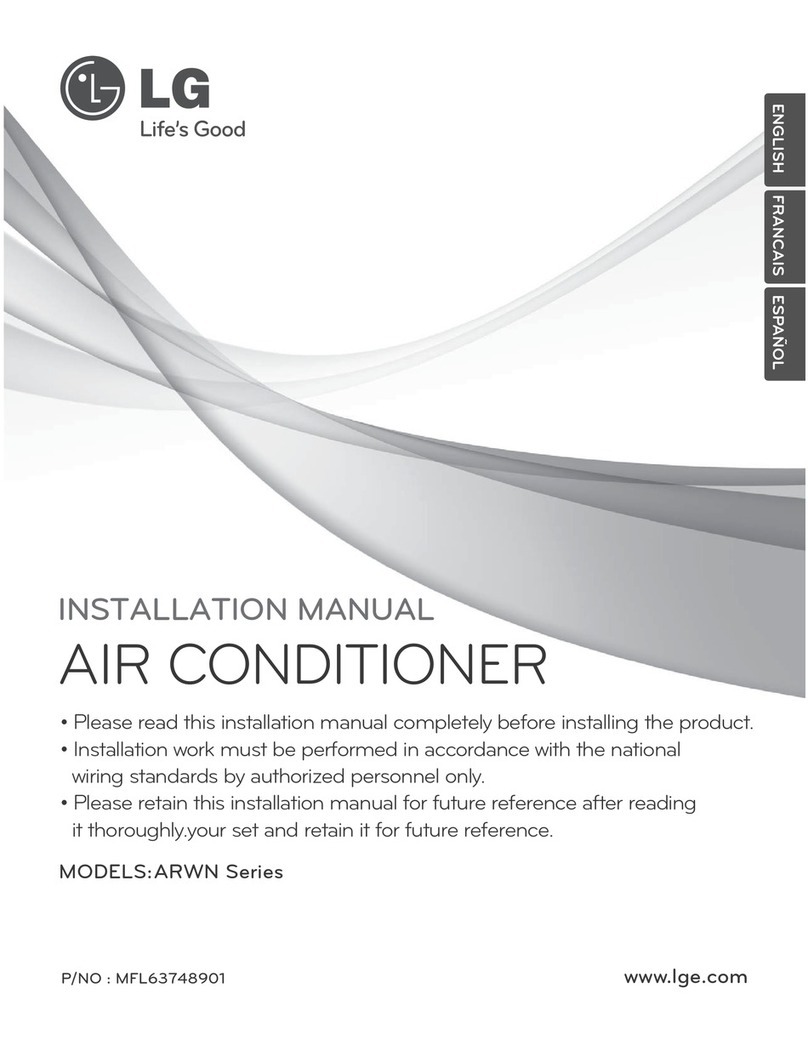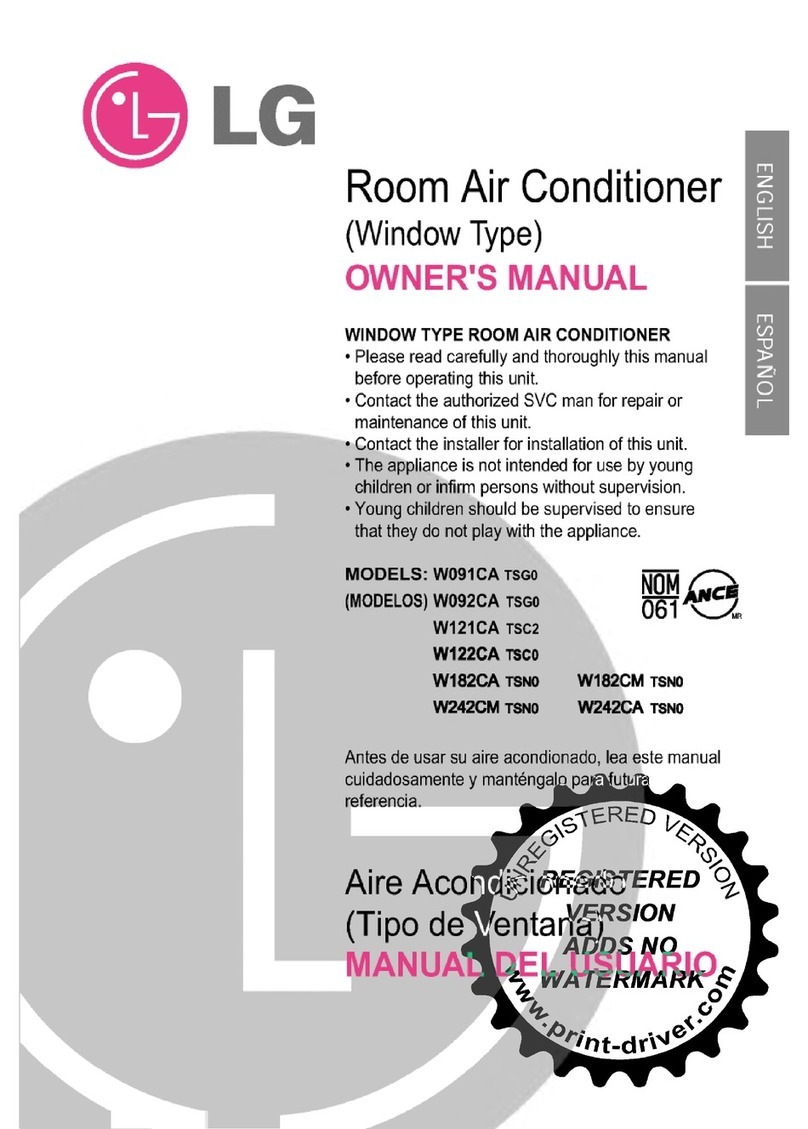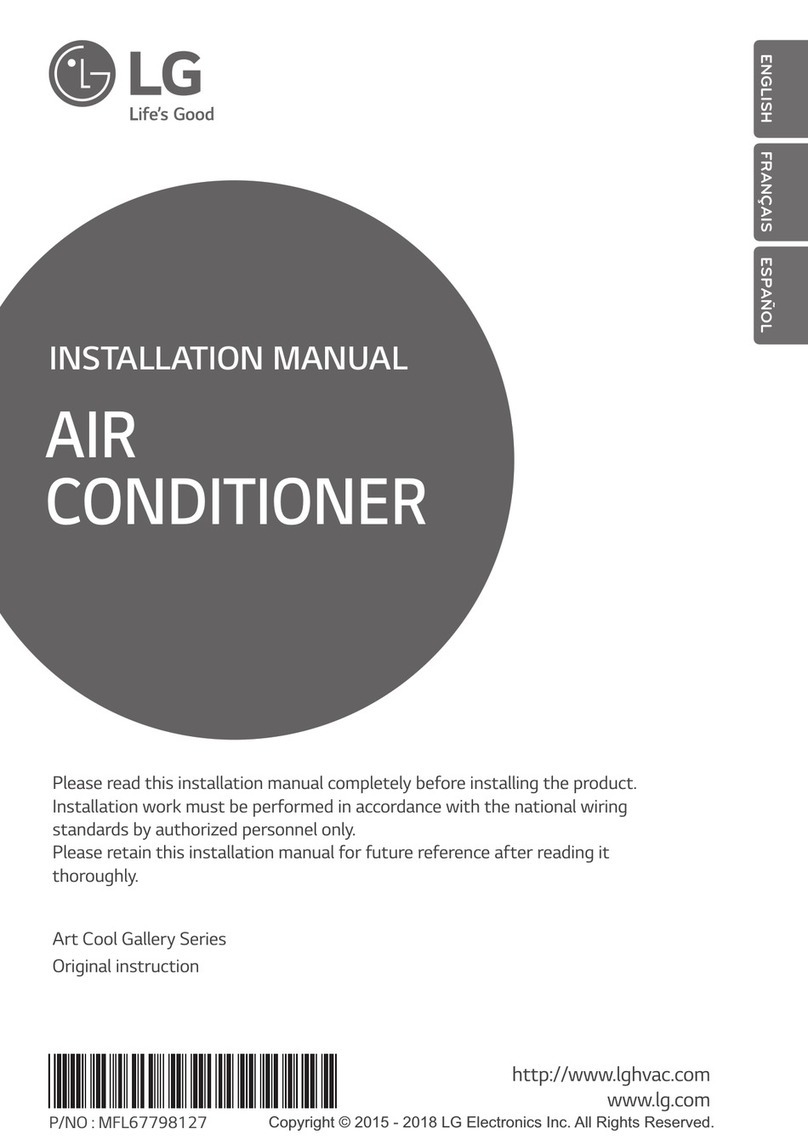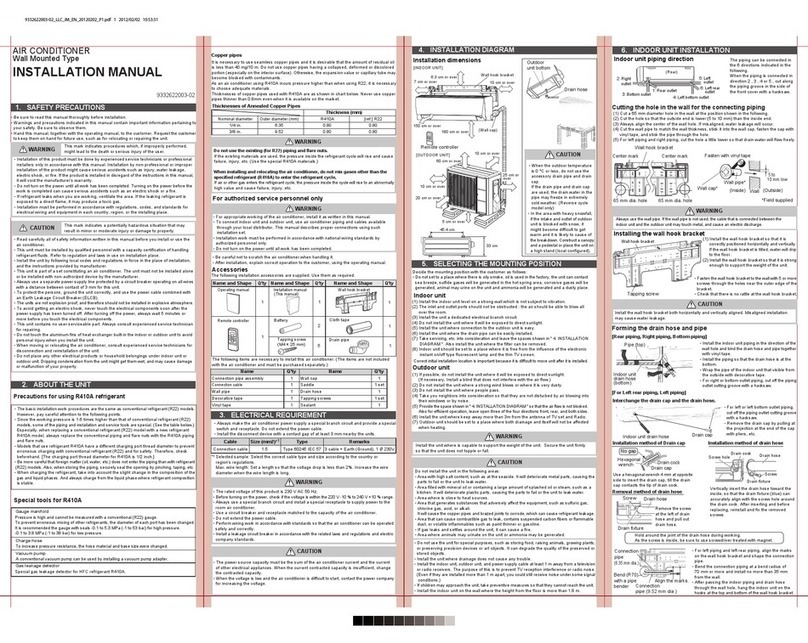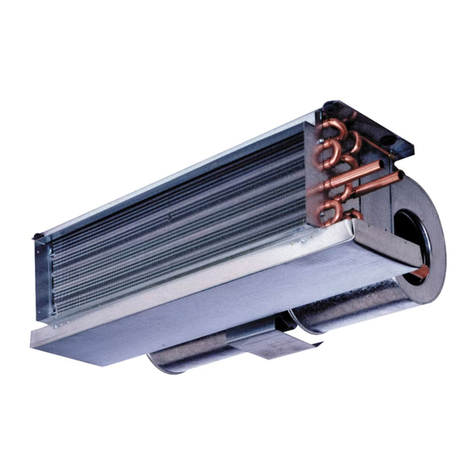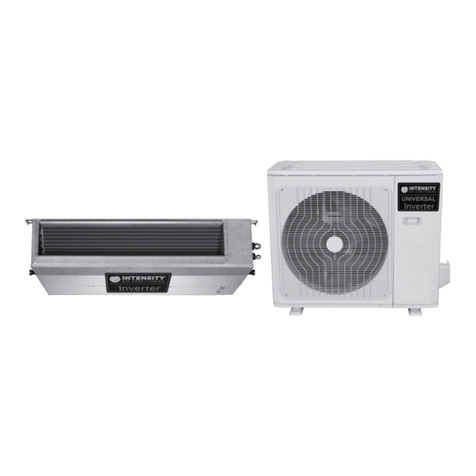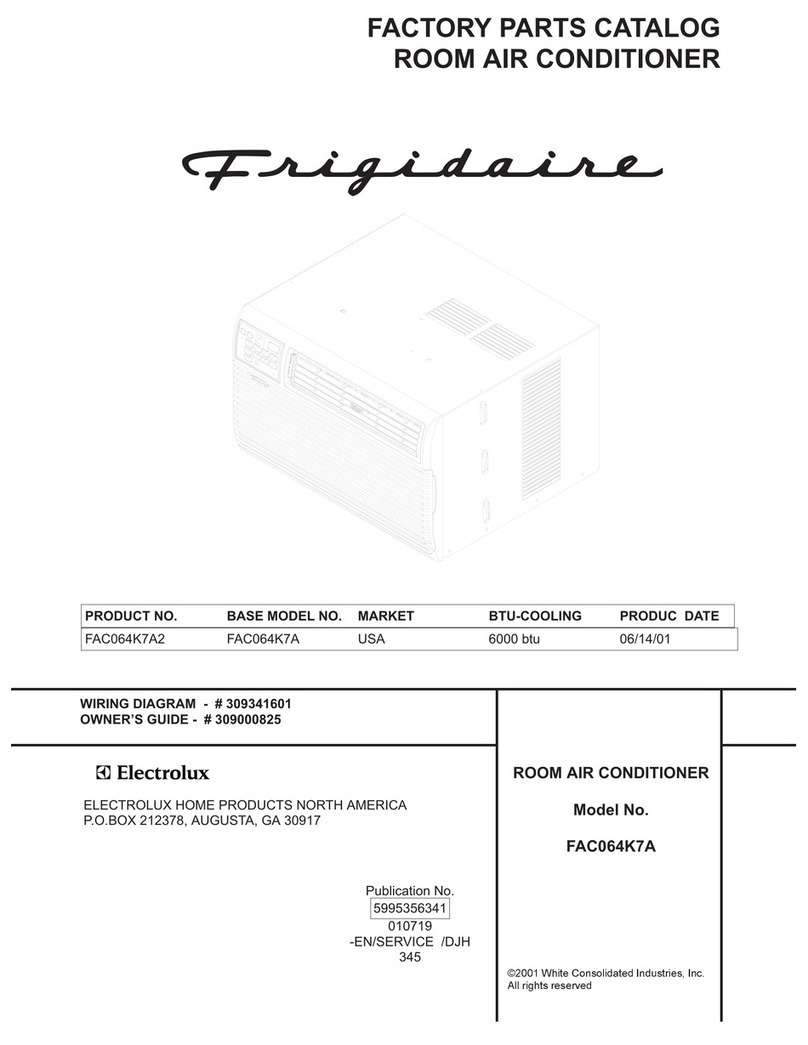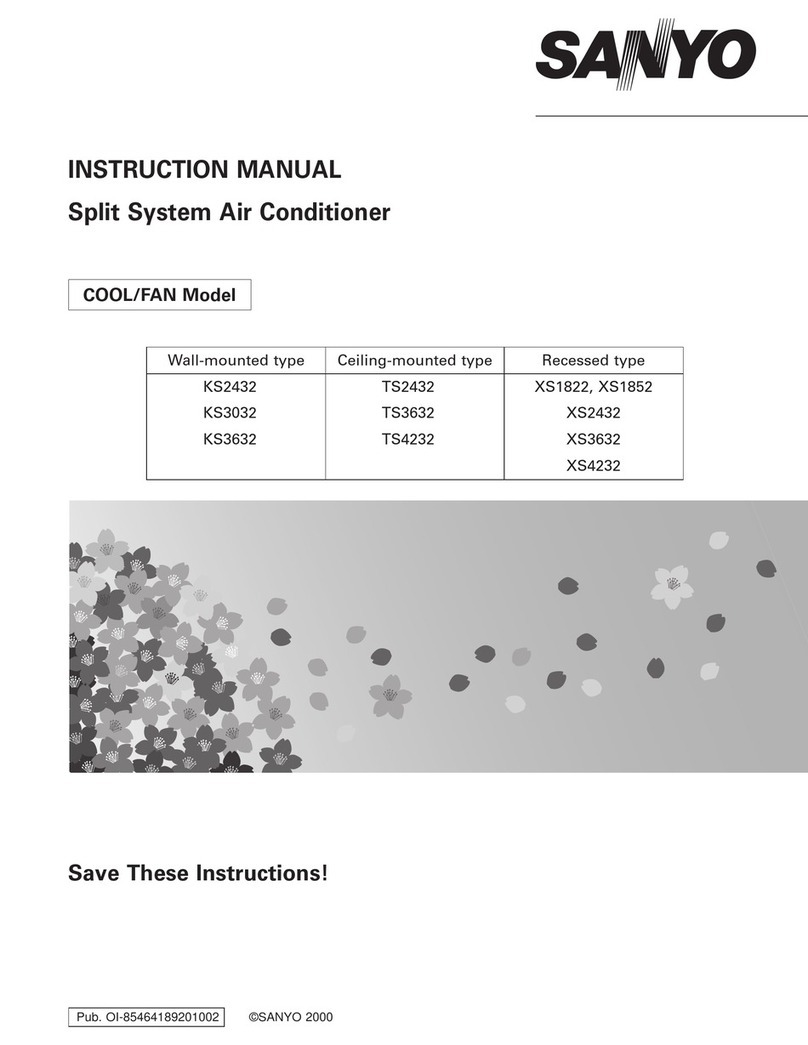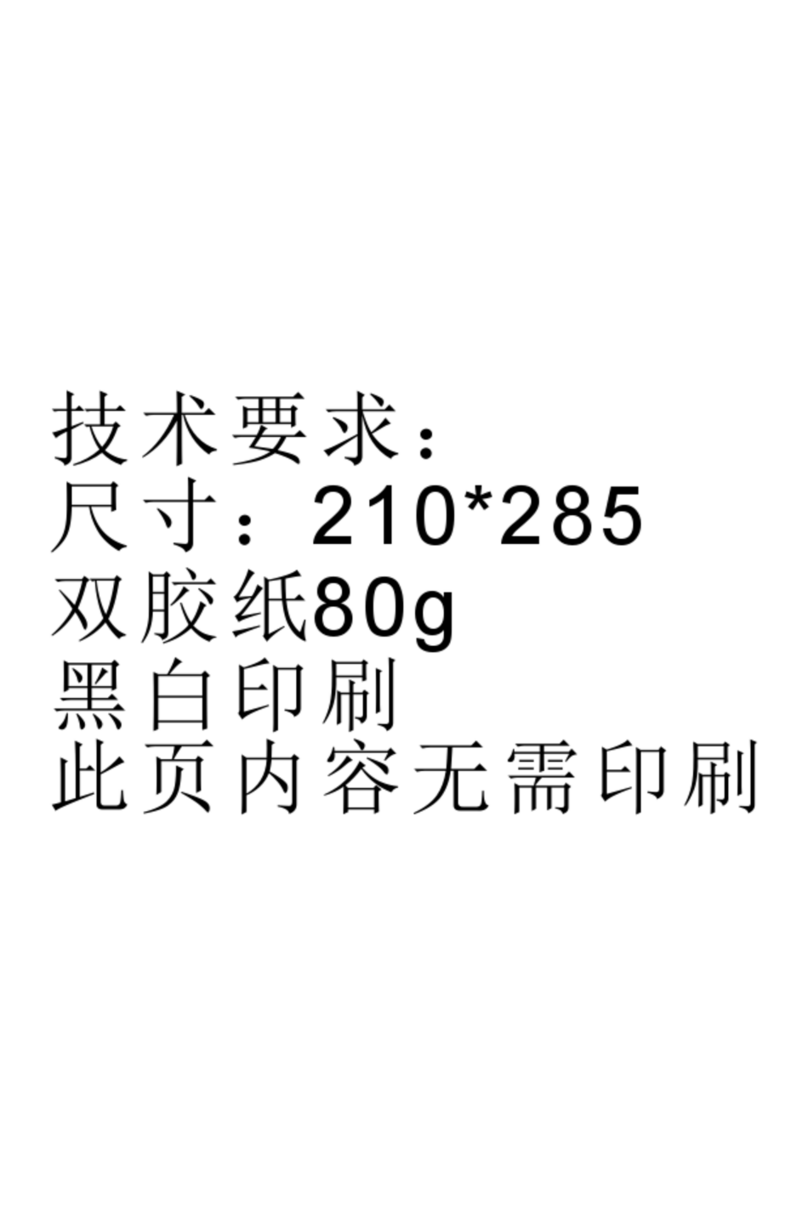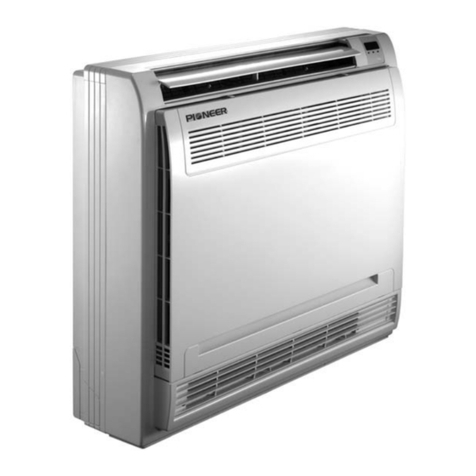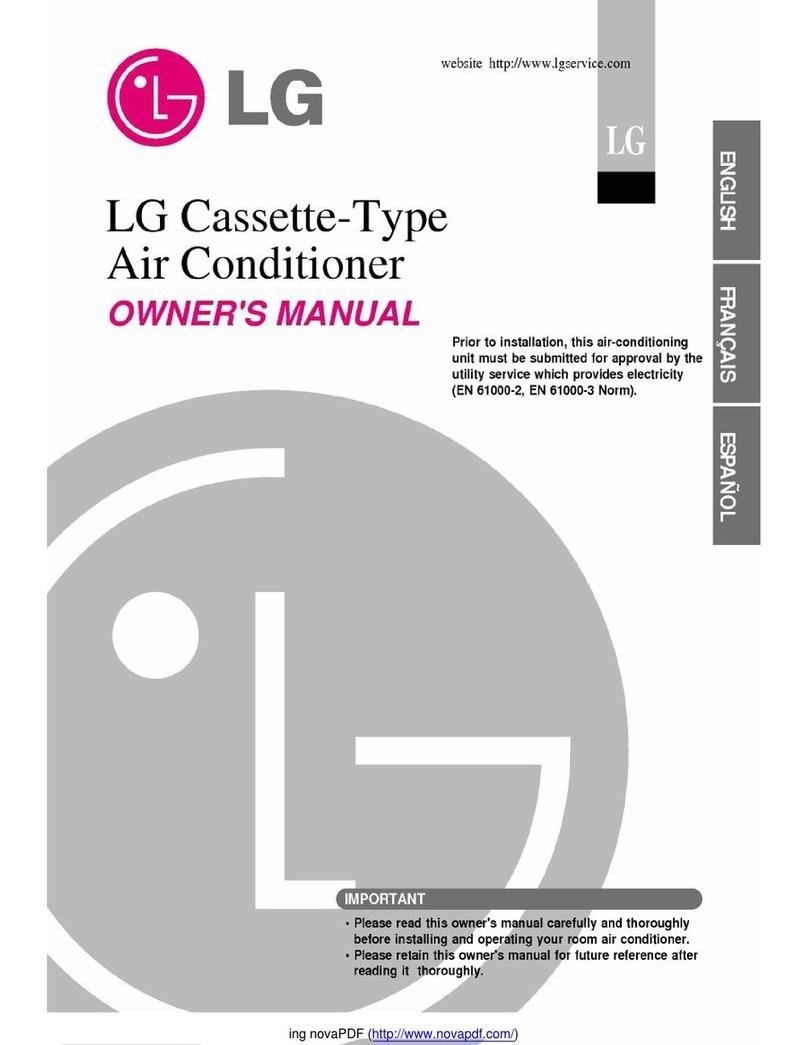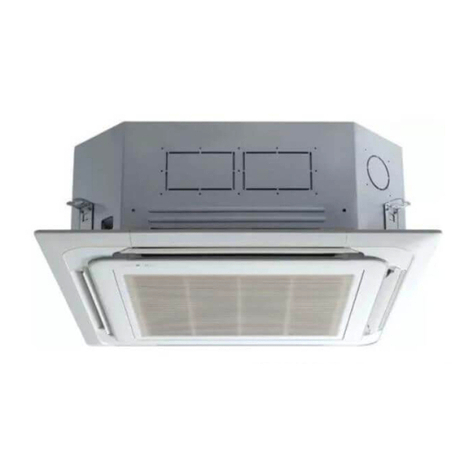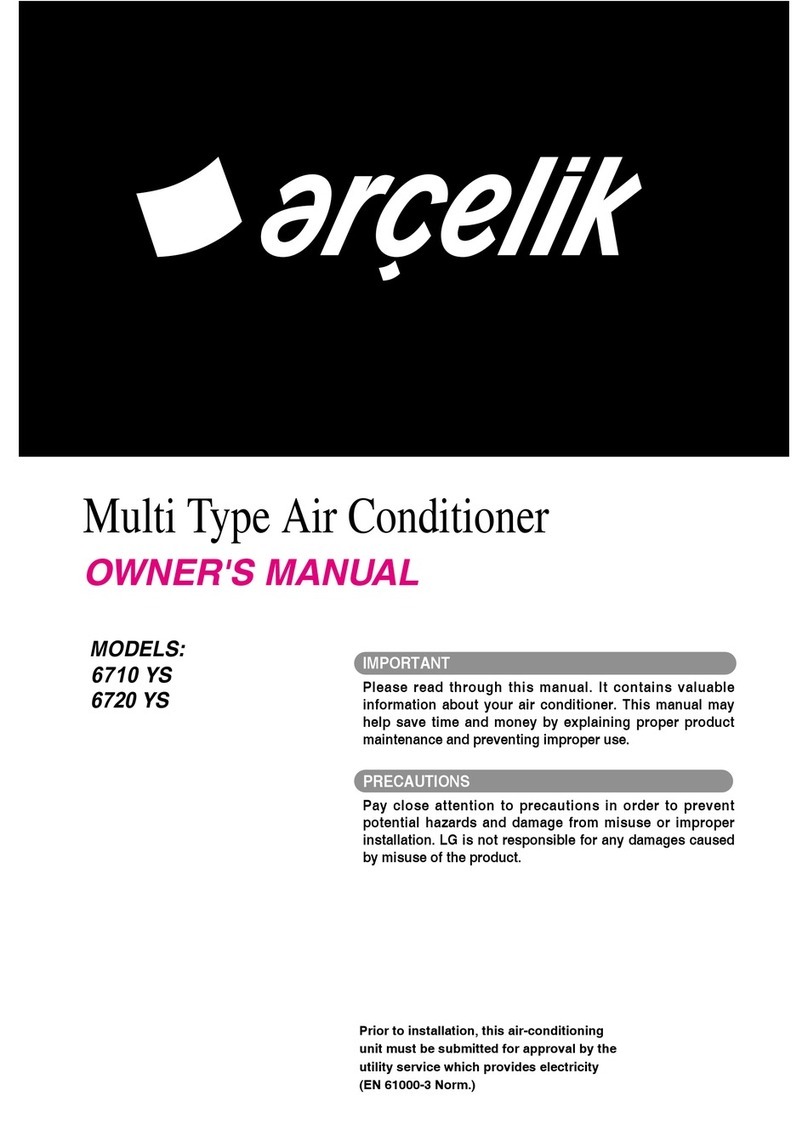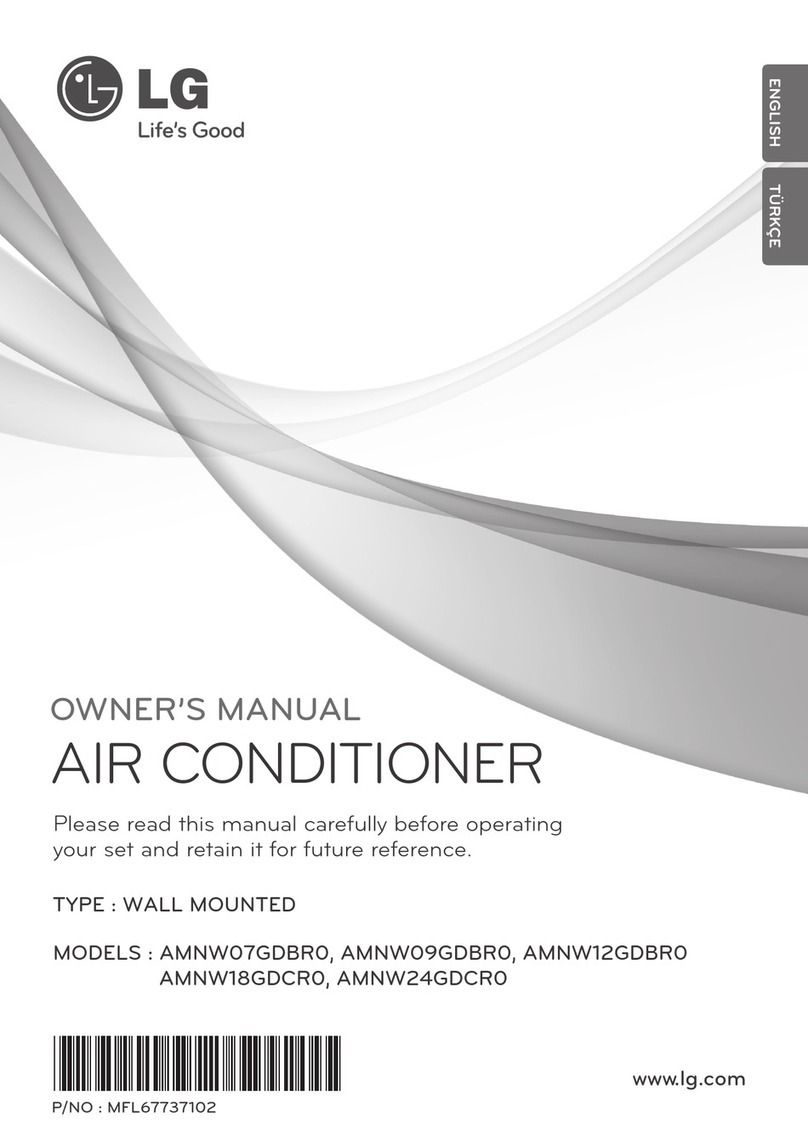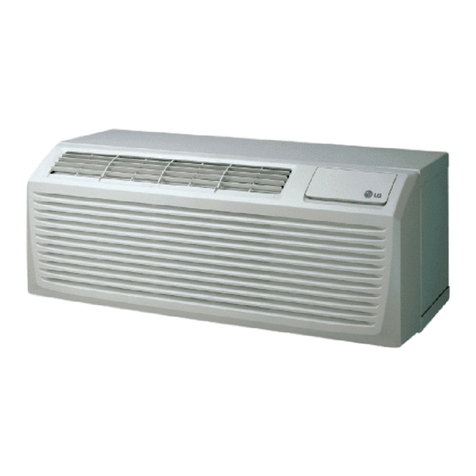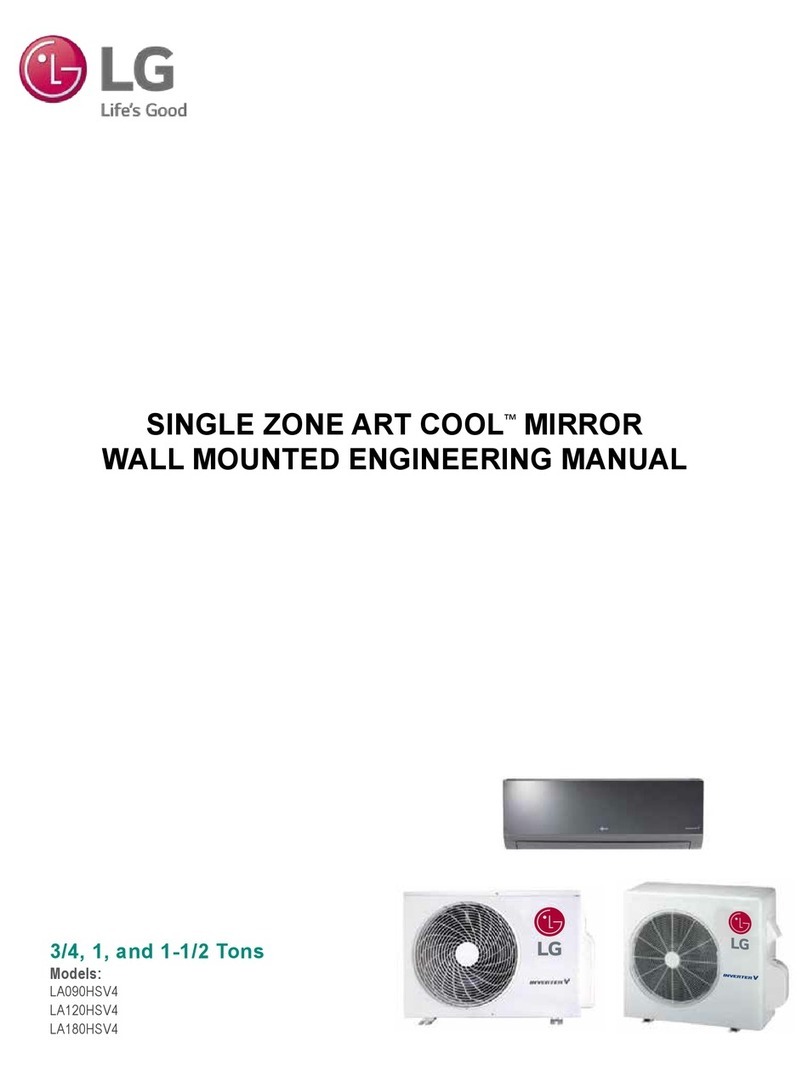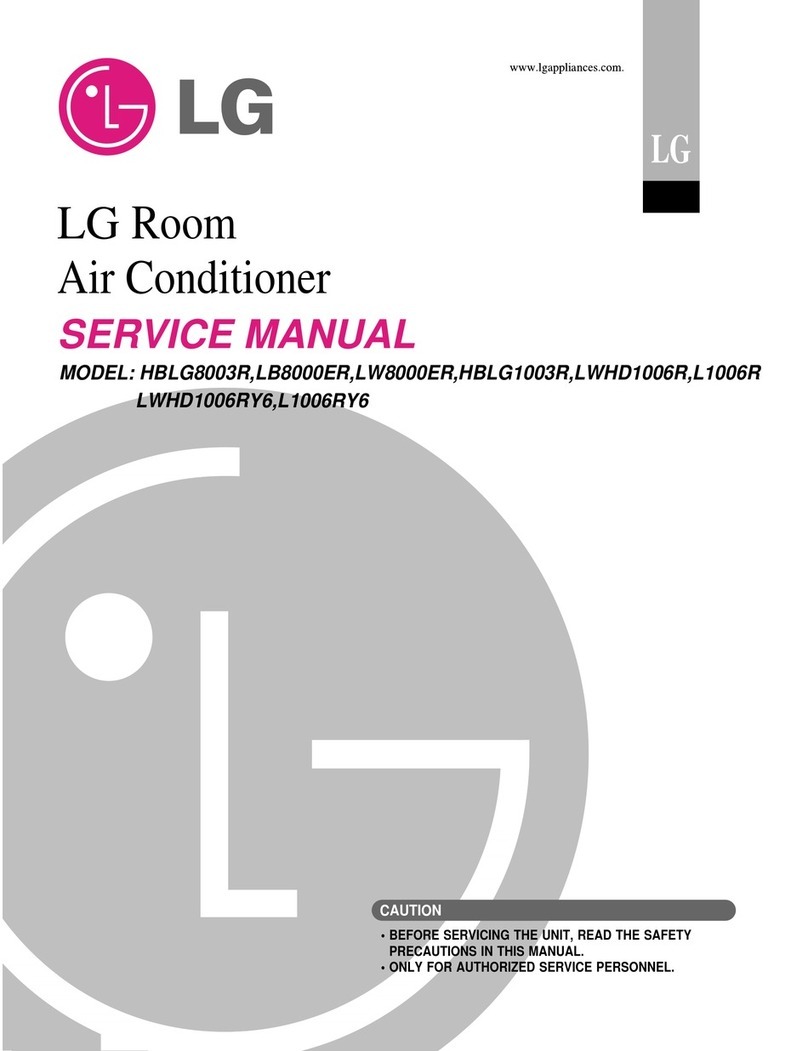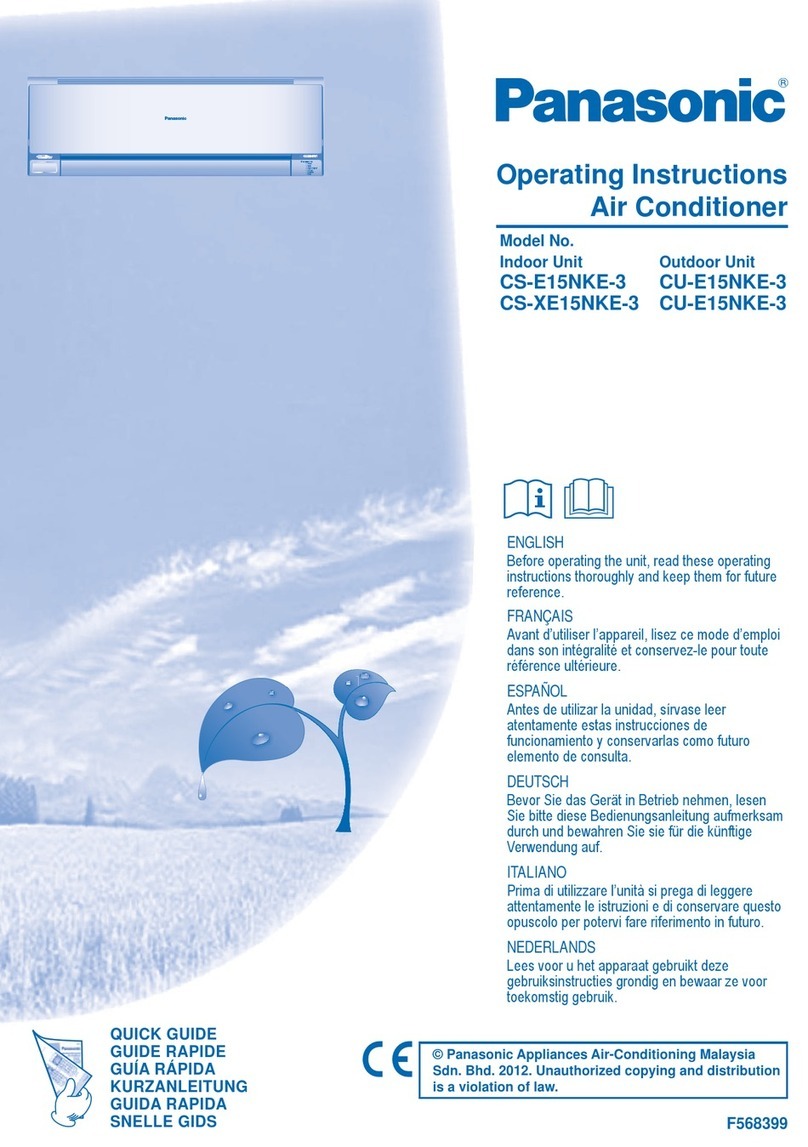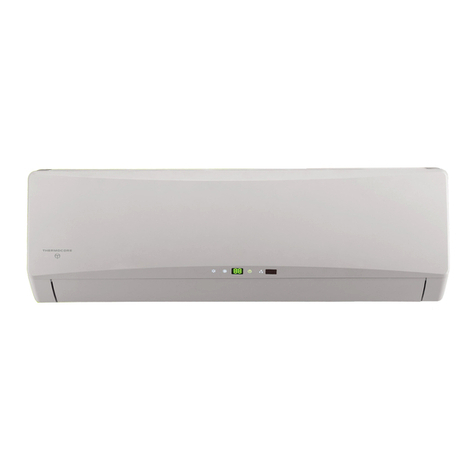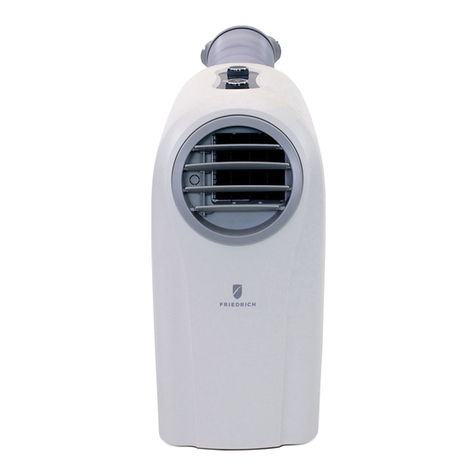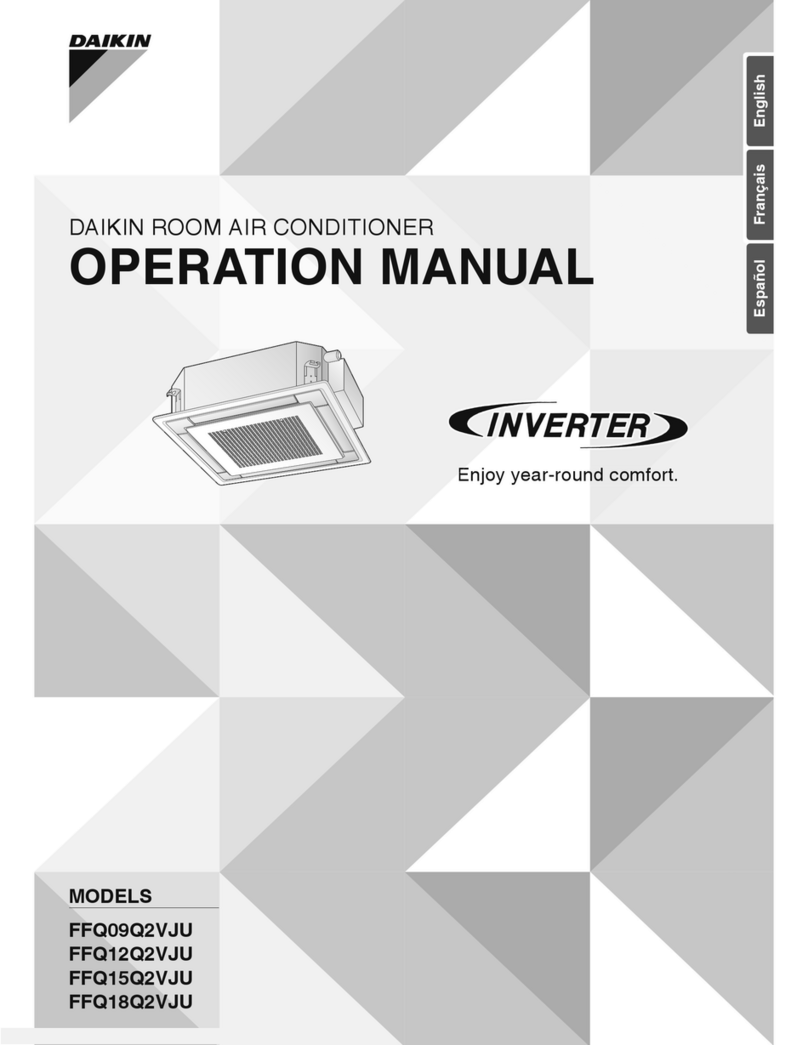
2
ENGLISH
TIPS FOR SAVING ENERGY
Here are some tips that will help you minimize the power consumption
when you use the air conditioner. You can use your air conditioner
more efficiently by referring to the instructions below:
IMPORTANT SAFETY
INSTRUCTIONS
READ ALL INSTRUCTIONS BEFORE USING THE
APPLIANCE.
Always comply with the following precautions to avoid dangerous
situations and ensure peak performance of your product.
WARNING
It can result in serious injury or death when the directions are ignored.
CAUTION
It can result in minor injury or product damage when the directions are
ignored.
WARNING
• Installation or repairs made by unqualified persons can result in
hazards to you and others. Installation of all field wiring and
components MUST conform with local building codes or, in the
absence of local codes, with the National Electrical Code 70 and the
National Building Construction and Safety Code or Canadian
Electrical code and National Building Code of Canada.
• The information contained in the manual is intended for use by a
qualified service technician familiar with safety procedures and
equipped with the proper tools and test instruments.
• Failure to carefully read and follow all instructions in this manual can
result in equipment malfunction, property damage, personal injury
and/or death.
Installation
• Have all electric work done by a licensed electrician according to
"Electric Facility Engineering Standard" and "Interior Wire Regulations"
and the instructions given in this manual and always use a special
circuit.
- If the power source capacity is inadequate or electric work is
performed improperly, electric shock or fire may result.
• Ask the dealer or an authorized technician to install the air conditioner.
- Improper installation by the user may result in water leakage, electric
shock, or fire.
• Always ground the product.
- There is risk of fire or electric shock.
• Always intstall a dedicated circuit and breaker.
- Improper wiring or installation may cause fire or electric shock.
• For re-installation of the installed product, always contact a dealer or an
Authorized Service Center.
- There is risk of fire, electric shock, explosion, or injury.
• Do not install, remove, or re-install the unit by yourself (customer).
- There is risk of fire, electric shock, explosion, or injury.
• Do not store or use flammable gas or combustibles near the air
conditioner.
- There is risk of fire or failure of product.
• Use the correctly rated breaker or fuse.
- There is risk of fire or electric shock.
• Prepare for strong wind or earthquake and install the unit at the
specified place.
- Improper installation may cause the unit to topple and result in injury.
• Do not install the product on a defective installation stand.
- It may cause injury, accident, or damage to the product.
• Use a vacuum pump or Inert(nitrogen) gas when doing leakage test or
air purge. Do not compress air or Oxygen and do not use Flammable
gases. Otherwise, it may cause fire or explosion.
- There is the risk of death, injury, fire or explosion.
• When installing and moving the air conditioner to another site, do not
charge it with a different refrigerant from the refrigerant specified on the
unit.
- If a different refrigerant or air is mixed with the original refrigerant, the
refrigerant cycle may malfunction and the unit may be damaged.
• Do not reconstruct to change the settings of the protection devices.
- If the pressure switch, thermal switch, or other protection device is
shorted and operated forcibly, or parts other than those specified by
LGE are used, fire or explosion may result.
• Ventilate before operating air conditioner when gas leaked out.
- It may cause explosion, fire, and burn.
• Securely install the cover of control box and the panel.
- If the cover and panel are not installed securely, dust or water may
enter the outdoor unit and fire or electric shock may result.
• If the air conditioner is installed in a small room, measures must be
taken to prevent the refrigerant concentration from exceeding the safety
limit when the refrigerant leaks.
- Consult the dealer regarding the appropriate measures to prevent the
safety limit from being exceeded. Should the refrigerant leak and cause
the safety limit to be exceeded, harzards due to lack of oxygen in the
room could result.
Operation
• Do not damage or use an unspecified power cord.
- There is risk of fire, electric shock, explosion, or injury.
• Use a dedicated outlet for this appliance.
- There is risk of fire or electrical shock.
• Be cautious that water could not enter the product.
- There is risk of fire, electric shock, or product damage.
• Do not touch the power switch with wet hands.
- There is risk of fire, electric shock, explosion, or injury.
• When the product is soaked (flooded or submerged), contact an
Authorized Service Center.
- There is risk of fire or electric shock.
• Be cautious not to touch the sharp edges when installing.
- It may cause injury.
• Take care to ensure that nobody could step on or fall onto the outdoor
unit.
- This could result in personal injury and product damage.
• Do not open the inlet grille of the product during operation. (Do not
touch the electrostatic filter, if the unit is so equipped.)
- There is risk of physical injury, electric shock, or product failure.
!
!
!
• Do not cool excessively indoors. This may be harmful for your health
and may consume more electricity.
• Block sunlight with blinds or curtains while you are operating the air
conditioner.
• Keep doors or windows closed tightly while you are operating the air
conditioner.
• Adjust the direction of the air flow vertically or horizontally to circulate
indoor air.
• Speed up the fan to cool or warm indoor air quickly, in a short period
of time.
• Open windows regularly for ventilation as the indoor air quality may
deteriorate if the air conditioner is used for many hours.
• Clean the air filter once every 2 weeks. Dust and impurities collected
in the air filter may block the air flow or weaken the cooling /
dehumidifying functions.
For your records
Staple your receipt to this page in case you need it to prove the date of
purchase or for warranty purposes. Write the model number and the
serial number here:
Model number :
Serial number :
You can find them on a label on the side of each unit.
Dealer’s name :
Date of purchase :




